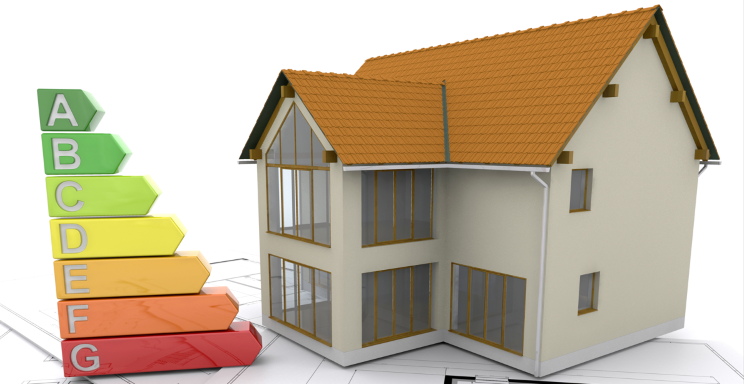In this article, we present a literature study by the Fraunhofer Institute for Building Physics IBP. In addition to a holistic approach, the renowned institute has focused on the role of window replacement to improve the energy efficiency of existing buildings. The window industry, represented by the European Aluminium aisbl, EuroWindoor aisbl and EPPA ivzw, commissioned this study to counter the general view that renewable energy sources are sufficient to cover the future energy requirements of buildings without the need for additional energy efficiency measures. In fact, both are important!
Background and objective
The aim of the measures defined in the European Green Deal is to transform the European Union into a climate-neutral continent by 2050. In this context, the building sector is an important influencing factor, accounting for around 43 % of final energy consumption in the EU, primarily for heating purposes.
The reduction of greenhouse gas emissions for heating buildings is therefore a priority of EU energy policy[1]. With the revision of the Energy Performance of Buildings Directive (EPBD)[2], the EU Commission intends to phase out the use of fossil fuels for heating and cooling in new buildings and in buildings undergoing major refurbishment or whose heating systems are being replaced.
In Germany, the first draft of a new regulation (Building Energy Act – GEG)[3] led to a public debate, particularly about the proportion of renewable energy to be used for new heating systems from January 2024. However, the relevance of additional energy efficiency measures was neglected in this discussion, although the GEG also provides for the energy efficiency of the building envelope in addition to the technical (heating) options.
In order to gain a better understanding of these issues, the Fraunhofer IBP has attached particular importance to this and, among other things, analyzed the economic and social aspects of energy-efficient renovation and identified the role of window replacement in the overall savings potential.
Summary of the results
The study shows that improving the energy efficiency of buildings, for example by replacing windows, is just as important as the use of heating and cooling systems based on renewable energy. In addition, the energy and economic efficiency of such heating (and cooling) systems is heavily dependent on the energy efficiency of the buildings. Therefore, financial incentives to improve the energy efficiency of the building stock should be created equally for all the measures mentioned.
The most important driver in terms of energy efficiency regarding the building envelope is the replacement of the single and double-glazed windows still frequently used in existing buildings with U-values that are significantly higher than modern window solutions. This is also an important driver of the planned decarbonisation measures.
(…) If these windows were replaced, significant energy efficiency potential could be realized (…)[4], according to the authors. For example, a window replacement rate of 1 % over a period of ten years with modern windows with U-values between 0.9 and 1.3 W/m²K would result in energy savings of 3.5 % in Central Europe. This savings potential also depends on the climate region and the typical U-values of the local conditions in the individual member states. The savings potential is highest in the Baltic countries at 4.5 % and lowest in the southern countries at 2.1 %. If all buildings in the EU were fitted with high-performance windows, 31% of the energy consumed annually could be saved.[5]
In addition to technical measures such as insulating the building envelope, insulating pipework, reducing thermal bridges and increasing airtightness, upgrading or replacing heating systems and recovering heat from exhaust air, there is great potential for reducing greenhouse gases, particularly in the use of renewable energies on the supply side.
Furthermore, and this is a special feature, the study looks at the reasons for renovation. The triggers for energy-efficient renovations are necessary maintenance measures or the replacement of defective components and the desire to counteract health problems. Other motivations for energy-efficient renovations include improving the property, saving energy costs and environmental considerations as well as thermal, visual and acoustic comfort.
It is intended to present the literature study as part of the Fensterbau Frontale forum
More information:
- Link to summary of Fraunhofer IBP study
- Link to full Fraunhofer IBP study
- european-aluminium.eu
- eurowindoor.eu
- eppa-profiles.eu
Sources:
[1] European Commission: Completion of key “Fit for 55” legislation. Available at: https://ec.europa.eu/commission/presscorner/detail/en/ip_23_4754. Accessed October 29, 2023.
[2] European Parliament: energy performance of buildings (recast): P9TA(2023)0068: Amendments adopted by the European Parliament on 14 March 2023 on the proposal for a directive of the European Parliament and of the Council on the energy performance of buildings (recast) (COM(2021)0802 – C9-0469/2021 – 2021/0426(COD))1.
[3] Press and Information Office of the Federal Government: Climate-friendly heating: new Building Energy Act to be implemented. Available at: https://www.bundesregierung.de/breg-en/issues/new-building-energy-act-2185010. Accessed October 29, 2023.
[4] Glass for Europe: Glazing Potential, 2019.
[5] Glass for Europe: Glazing Potential, 2019.
Press Contact:
Miriam Weppler
EuroWindoor General Secretariat
Walter-Kolb-Str. 1-7
60594 Frankfurt / Germany
Phone: +49 (69) 95 50 54 – 36
Fax: +49 (69) 95 50 54 – 11
Email: GS@EuroWindoor.eu
